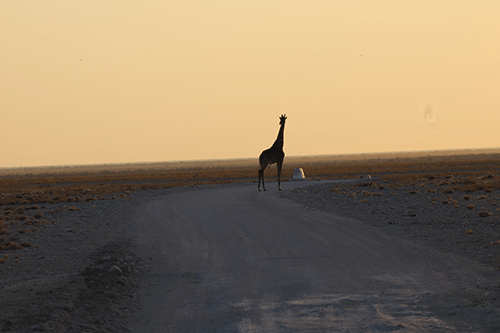The Ministry of Environment, Forestry and Tourism has invested over N$136 million in the upgrading of tourist roads in the Etosha National Park between February 2019 and May 2023.
The investment is part of a broader effort to improve the tourism infrastructure in Namibia and to retain revenue lost due to the poor condition of the roads in the popular national park.
Providing an update on the status of road infrastructure in Etosha, Boas Erkki, the director of planning and technical services, said the tourist roads within the park, as well as other parks in general, are relatively satisfactory compared to roads found in various African countries.
However, Erkki did concede that there have been instances when the conditions of the roads were deemed “very poor” due to the influx of tourists and good rains over the years.
Consequently, some tour operators, guides and car rental services were not keen on visiting Etosha as well to avoid specific areas of the park, resulting in reduced revenue and some tourists not getting the whole experience.
“The detrimental effects of poor road conditions on tourism, specifically in Etosha, have improved, and the ministry is working around the clock to keep improvements on the roads. Tourists had challenges and had to truncate their visits to camps such as Dolomite, Halali, and Onkoshi due to the state of the roads.
“This has had a ripple effect on the surrounding lodges and rental industry, causing negative impacts on their operations as well. Ultimately, both the State and the NWR have suffered significant revenue losses as a result,” he told the media on Wednesday.
From 2009/2010 to 2016/2017, the ministry upgraded 282.1km of tourist roads in the park, prioritising the worse sections from the central towards the eastern part of the park.
From 2018/2019 to 2023/2024, the ministry undertook another project to enhance the infrastructure in the unrestricted western section of the park.
This initiative is being executed in five phases, spanning from 1 February 2019 to July 2023 or before the end of the year, as there might be a few delays.
Despite these improvements, the ministry is working on entering a service-level agreement with private contractors who will assist in the constant maintenance of the roads in Etosha.
“The process of enlisting the private contractor(s) should be completed this year,” said Erkki.
He added, “as much as the ministry strives to maintain and keep the conditions of the roads around Etosha, the tour operators and visitors are urged to drive responsibly to prevent damaging our roads.”
Environment minister Pohamba Shifeta echoed similar sentiments, stating that maintaining the road infrastructure and the entire park is a priority.
He said that this is necessary to maintain the good standards of the park as it is a leading tourist attraction in the country.
He also said that sometimes the roads are not at their best, not because of negligence but because of the influx of cars and the increasing population of animals.
He added that a maintenance entity is needed to address these issues.
“Practically, we need a grader in each road every week to make sure they are in good condition, and our tourists are happy,” he said. As an integral component of the ministry’s long-term strategy, they aim to attain sufficient funding through annual budget allocations.
This approach guarantees the establishment of conservation fees to consistently maintain and upgrade park infrastructure, acquire and replace outdated heavy equipment, protect wildlife and enforce laws, and implement effective human-wildlife management practices.
Additionally, the allocated funds will cover preventive maintenance expenses to ensure the overall upkeep of the infrastructure within the parks.


